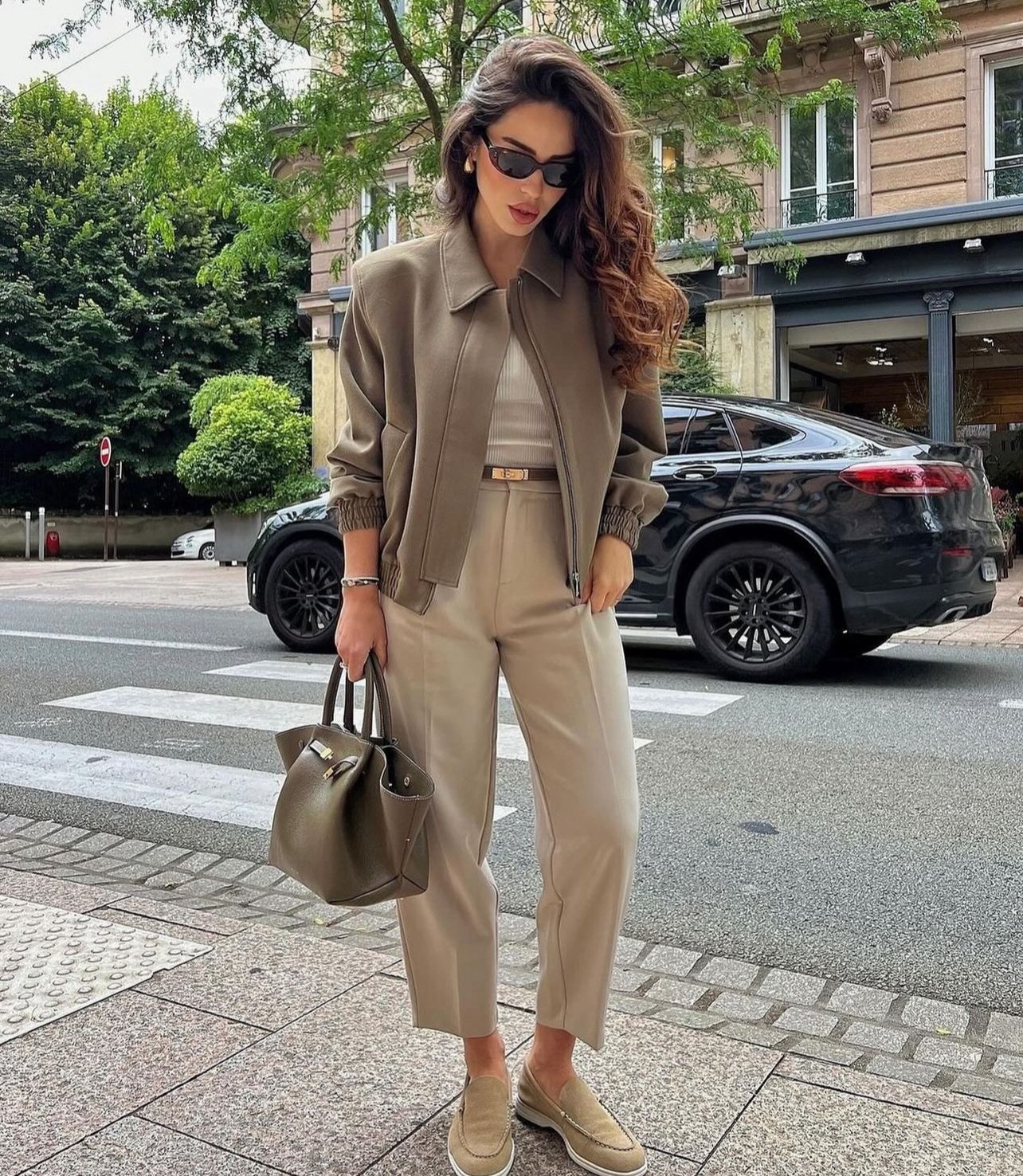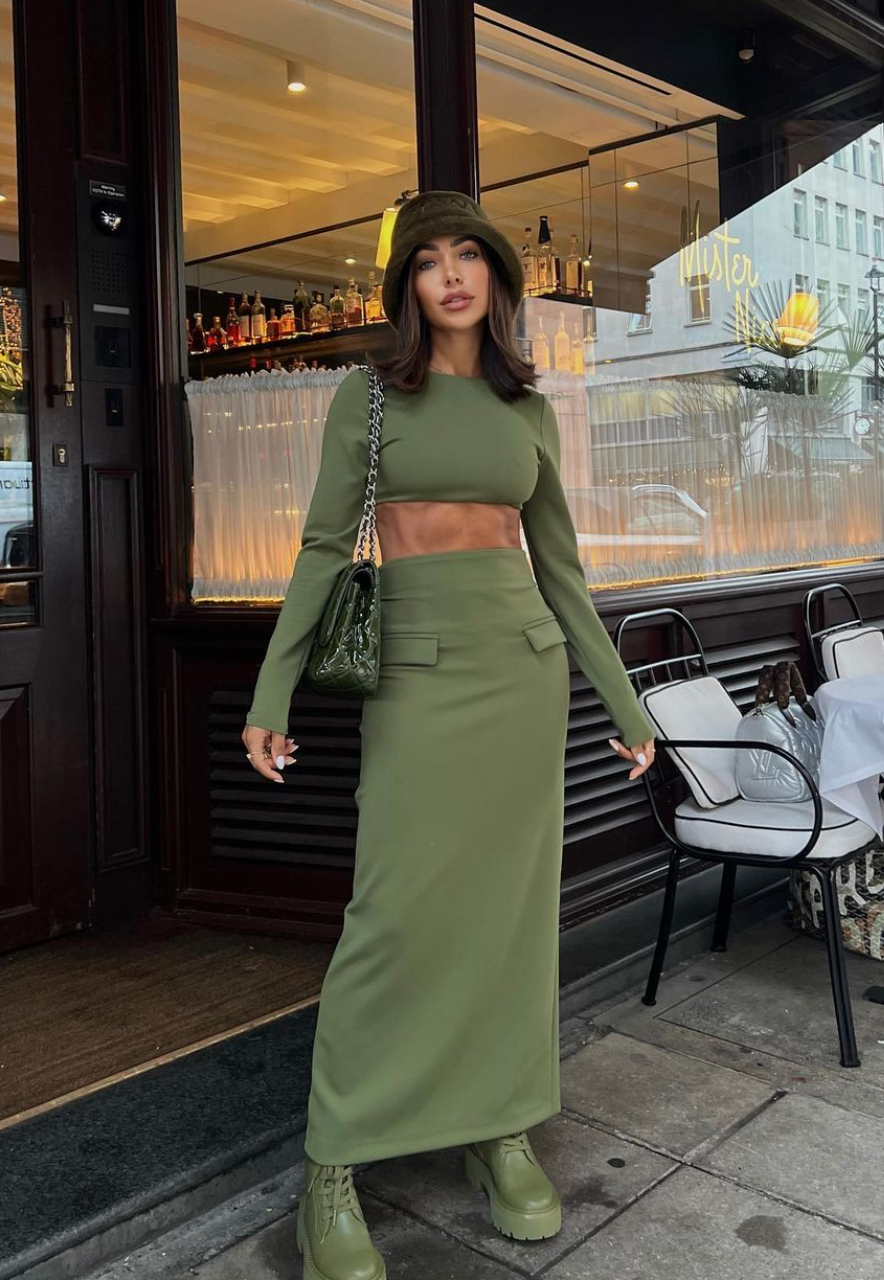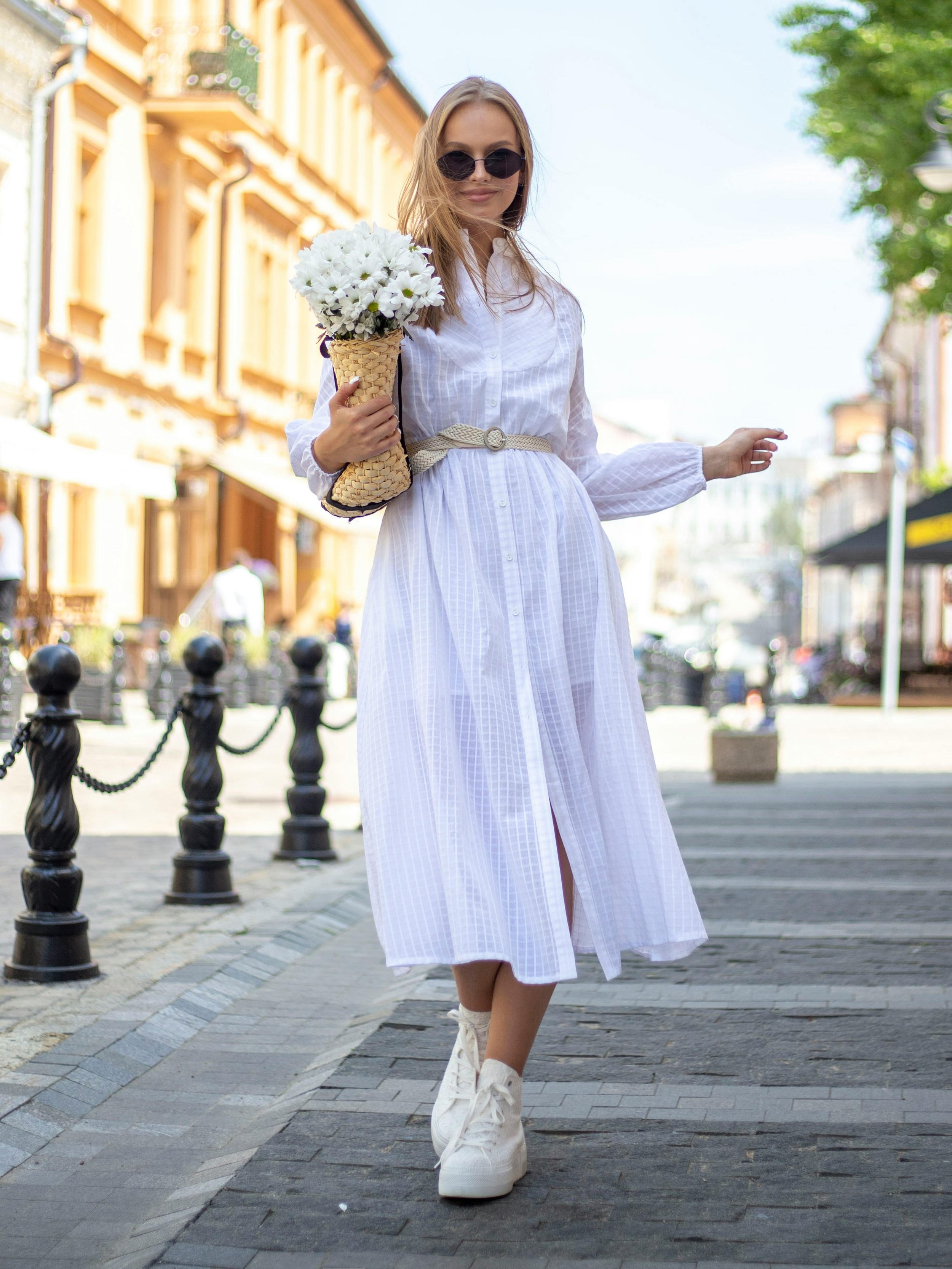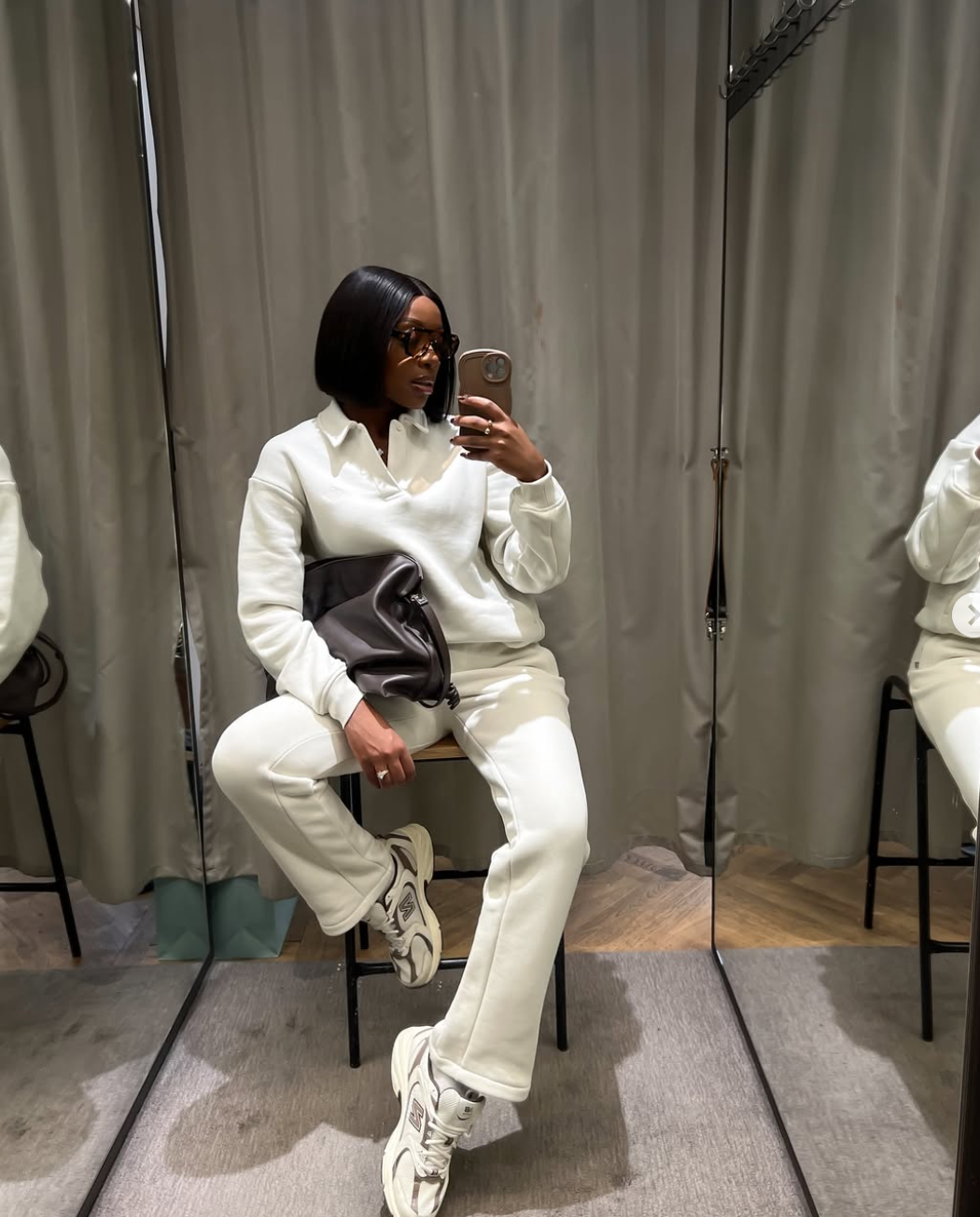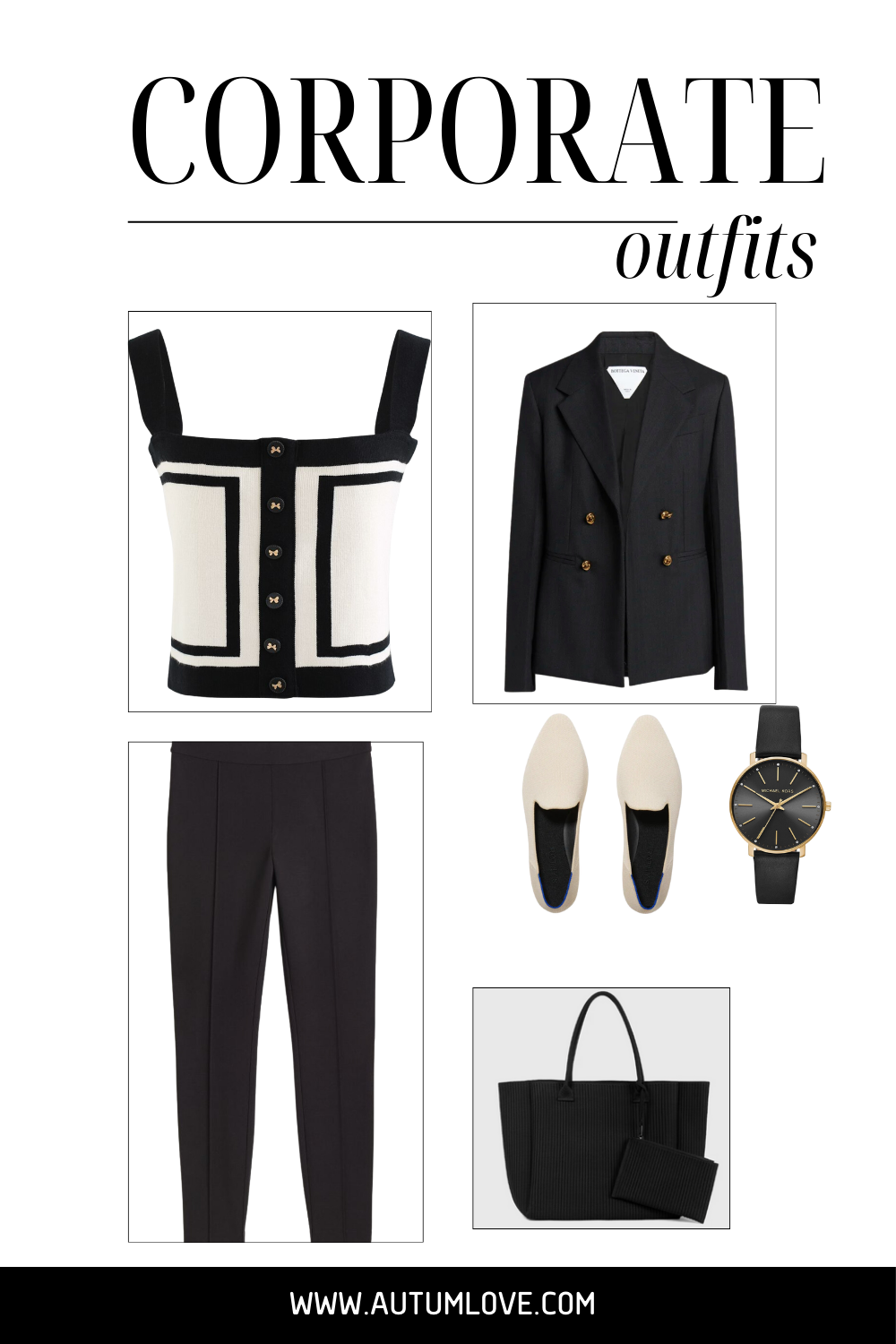A Guide to Styling Monochromatic Outfits
Ever thought about rocking a single color from head to toe? Well, you're not alone. The monochromatic look is more than just a trend—it's a streamlined approach to getting dressed that might just revolutionize your morning routine. This style simplifies your outfit decisions while giving you a sleek, unified look
What is Monochromatic?
Photo:@osullliv
Monochromatic fashion means wearing outfits that are all one color. It's not just about throwing on different items of the same shade; it's about crafting an outfit that’s both cohesive and stylish. You can play around with different shades and textures to keep things interesting without straying from your chosen hue.
Think it sounds a bit plain? Here's the catch: mixing textures like a soft cotton tee with a smoother silk skirt in the same color can create a look that’s subtle yet sophisticated. Whether it’s creamy whites for a summer day or a full navy look for the office, monochromatic outfits can adapt to any setting or style preference.
In the next parts of this guide, we’ll walk through how to pick your color based on your skin tone, how to layer without losing that monochrome magic, and how to choose accessories that enhance rather than distract. Stick with us, and let’s make your style as simple as it is striking!
Celebrity Inspiration
Who better to show us how to rock a monochrome look than our favorite style icons? Let’s dive into how these celebrities make monochromatic fashion look effortlessly chic:
Rihanna: Have you seen Rihanna absolutely owning that lavender look? She's the queen of adding depth to a single color by playing with luxurious textures. It's a lesson in keeping it cool and coordinated.
Zendaya: Zendaya is our go-to for a mix of bold and classic. Remember her all-emerald suit with those matching pumps? She’s proof that monochrome can be both youthful and sophisticated, making a statement wherever she goes.
Blake Lively: Blake Lively knows how to do monochrome with a twist! That all-yellow outfit with layers of velvet and satin? She shows us that sticking to one color doesn’t have to mean sticking to one texture. Talk about turning heads!
Tracee Ellis Ross: Tracee Ellis Ross brings fun to monochrome. She mixed shades of pink from head to toe, and it’s just playful and chic. She’s all about layering colors that are close but not quite the same, which keeps it exciting.
Janelle Monáe: Janelle Monáe sticks to minimalist colors but always throws in a twist. Her all-white with subtle black accents? It’s edgy yet fresh, proving monochrome is anything but dull.
Kim Kardashian: Kim K has been championing monochrome for ages. Whether it’s her neutral body-hugging outfits or those sleek grey pieces, she knows how to highlight her curves while keeping the palette super unified.
Jennifer Lopez: J.Lo is the queen of glam, right? When she steps out in all silver or vibrant red, it's not just a look—it's an event! She adds that sparkle and texture, showing us how monochrome can be as glamorous as you dare it to be.
Meghan Markle: For a touch of royal elegance, Meghan Markle's all-white engagement shoot outfit was perfection. Simple, sophisticated, and totally princess-worthy. She’s all about the refined simplicity that monochrome can offer.
Step-by-Step: Building Your Monochromatic Outfits
Photo:@aimazin
Creating a monochromatic outfit is both an art and a science. It allows for creativity with color while ensuring a harmonious look. Follow these steps to build an outfit that’s not only stylish but also flattering and suitable for any occasion.
Choosing Your Base Color
Selecting the right color for your outfit is crucial and can make or break your monochromatic look. Consider these factors:
Skin Tone: Choose colors that complement your natural undertones. Cool undertones look great in blues, purples, and emerald greens, while warm undertones shine in red, peach, coral, and amber. Neutral undertones have the flexibility to wear shades from either spectrum but often excel in muted or medium shades.
Occasion: Think about where you're going. Neutrals like grays, navy, and tans are perfect for professional settings. Bright colors like hot pink or electric blue might be more appropriate for a party or a casual outing.
Layering Pieces
Layering is essential in monochromatic dressing because it adds texture and depth to prevent your outfit from looking flat. Here’s how to do it right:
Textural Contrast: Incorporate different materials to keep the outfit interesting. Combine a cotton tee with a velvet blazer or a silk blouse under a chunky knit cardigan. Each layer should add a new dimension but stay within the same color family.
Shades and Tints: Use different shades (darker) and tints (lighter) of your base color to create a layered effect. For instance, a navy suit with a light blue shirt creates a subtle and effective contrast.
Outerwear: Depending on the season, add a final layer with a coat or jacket. Make sure it complements the rest of your outfit in color and material. A trench in a shade close to your outfit’s primary color can tie the look together beautifully.
Accessorizing
Accessories are the final touch that can elevate your monochromatic outfit from good to great. Use them to introduce new textures, subtle contrasts, or a splash of complementary color.
Jewelry, Bags, and Shoes: Choose accessories that align with your outfit’s color scheme. Metal tones like gold, silver, and bronze work well as neutrals that can pair with just about any color. For a bolder statement, pick accessories in a color that is on the opposite side of the color wheel from your outfit for a pop of contrast.
Scarves and Hats: These can be matched closely to your outfit for a seamless look, or you can choose a contrasting texture or a slight color variation to add interest.
Belts and Eyewear: Utilize these accessories to introduce a darker or lighter shade of your base color. A belt in a dark plum can define the waist beautifully in a lighter purple dress.
Monochromatic Outfit Ideas
Diving into the world of monochromatic outfits offers an easy way to elevate your style game with cohesive color palettes and a touch of personal flair. Here are some simple ways to embrace this fashion trend across different looks and occasions:
For Work
An elegant monochromatic suit in a classic style, such as a navy blue suit paired with a lighter blue shirt, is a great way to maintain a professional edge while adding visual interest through similar shades. For those who prefer light neutrals, think of an all-gray ensemble mixing different fabrics—like a wool blazer over a silk top—to keep the entire outfit engaging yet suitable for any business meeting.
For Casual Days
Casual outings call for relaxed yet stylish monochrome outfit ideas. Imagine a forest green sweater paired with darker shade green skinny jeans—an effortless look that's both comfortable and on-point. Or, for added bonus points, a chunky knit sweater and white pants create a fresh, airy vibe that's perfect for a casual day out. Throw on a denim jacket for a layered look that mixes textures beautifully.
For Special Occasions
There’s never been a better time to shine in vibrant hues. A deep plum dress with matching leather accessories can be the ultimate statement piece for a special event. Alternatively, an all-black outfit featuring a black leather jacket, black dress, and black boots makes for a daring yet sophisticated choice that leverages solid blocks of color for a powerful on-screen impact.
Throughout these outfits, adding black accessories, statement jewelry, or even a pair of ankle boots in similar tones can take your monochrome fashion to a whole new level. Mixing textures, from smooth silk to rough denim, not only adds depth but also keeps the entire look tied together, making each monochromatic ensemble a perfect mix of style and function.
Do's and Don'ts of Monochromatic Styling
Photo::@aimazin
Navigating the monochrome trend can be as simple as it is sophisticated when you know what to embrace and what to avoid. Here’s a handy list of do's and don’ts to help you get the most out of your monochromatic style:
Do's:
Mix Textures Within the Same Color: This is a great way to add visual interest and depth to your outfit. For example, pairing a silky blouse with a ribbed skirt in shades of blue can elevate the entire look, making it more dynamic and engaging.
Use Different Shades of the Color to Create Dimension: Implement a broad spectrum of hues within one color family to give your outfit a layered feel. A forest green wool coat over a light green cotton dress not only looks chic but also adds a rich, dimensional effect to your monochromatic style.
Don’ts:
Avoid Using the Exact Same Shade in Every Element: While it might be tempting to match every item perfectly, this can lead to a flat and uninteresting appearance. Instead, embrace a range of shades to keep each piece distinct yet harmonious.
Be Wary of Fabric Choices That Don’t Suit the Season or Occasion: Choosing the right fabric is crucial. A heavy velvet suit might not be the best choice for a hot summer day, just as a linen dress might not hold up during a winter event. Always consider comfort and appropriateness when selecting materials for your monochromatic look.
Disclaimer: This blogpost was originally published April 5, 2023 and was updated September 19, 2024

